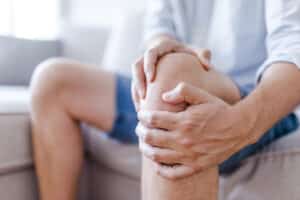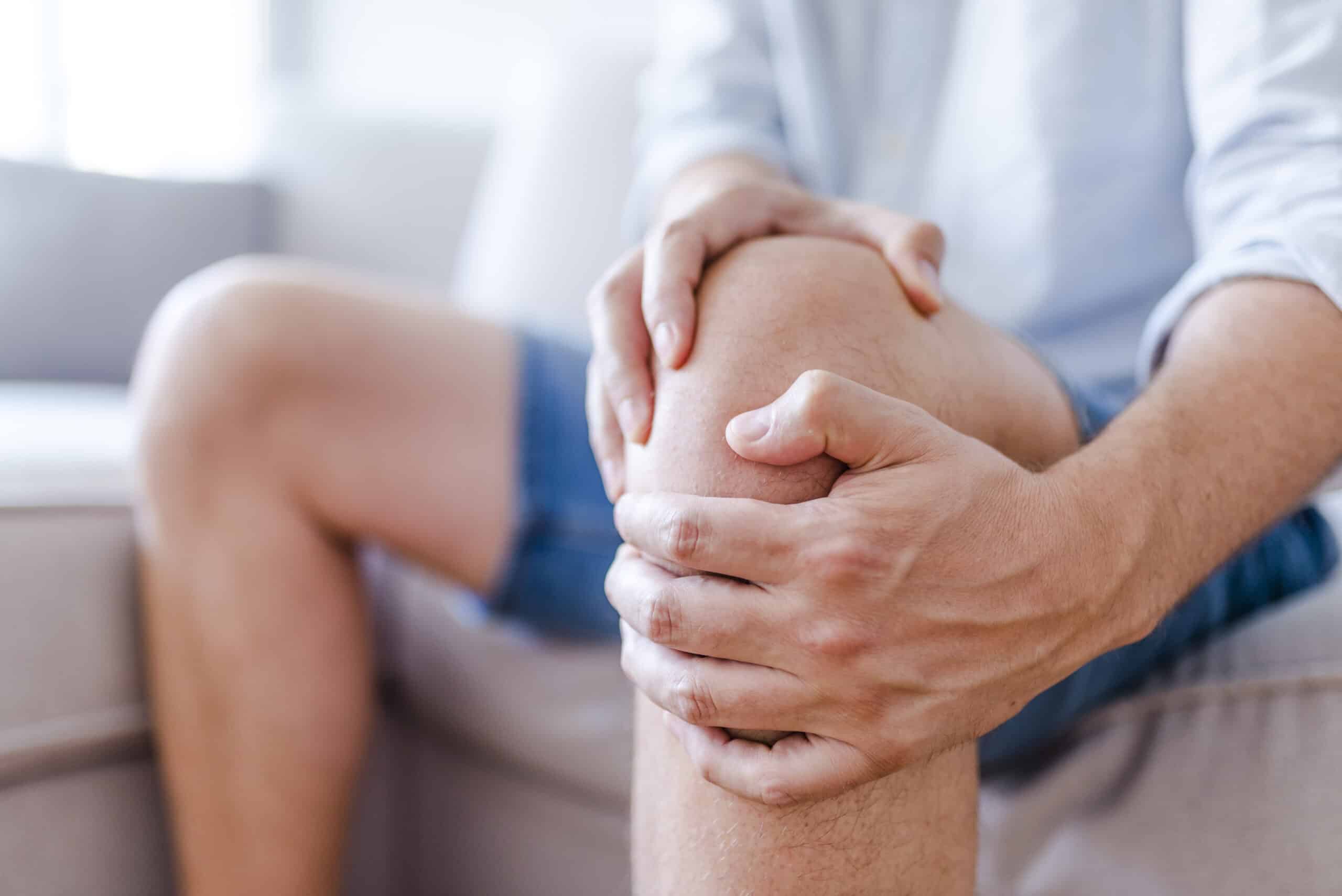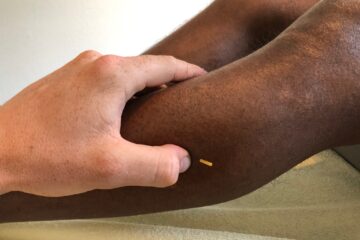Osteoarthritis
What is osteoarthritis?
Osteoarthritis is a widespread Degenerative joint diseasewhich is caused by the wear and tear of the cartilage tissue in the joints. This wear and tear causes the joints to become painful and stiff, which can severely impair mobility. In contrast to ArthritisWhile osteoarthritis is an inflammatory disease, osteoarthritis is mainly based on mechanical wear and degeneration.
Specific forms of osteoarthritis: coxarthrosis and gonarthrosis
Coxarthrosis

Gonarthrosis
Osteoarthritis of the knee, on the other hand, affects the knee joint. Patients with osteoarthritis of the knee often experience pain in the knee, which can worsen when walking, climbing stairs or sitting for long periods. Swelling and crunching noises (crepitations) in the joint are also characteristic symptoms. Here too, mobility can be severely restricted and inadequate treatment can lead to considerable mobility restrictions.
Symptoms of osteoarthritis
The symptoms of osteoarthritis can vary, but typically include:
- PainThese often only occur at first during exercise and can also be felt at rest in advanced stages.
- StiffnessEspecially after periods of rest, the joints feel stiff and immobile.
- SwellingThese can occur in the affected joints.
- Movement restrictionsThe affected joints are more difficult to move.
- Crunching noises: Noise may occur in the joint during movement.
Differentiation of pain
Osteoarthritis pain is typically associated with movement and exertion and can increase in intensity throughout the day. It is important to distinguish this pain from that of chronic joint inflammation such as arthritis, as the latter often also occurs at rest and at night.
When should you see a doctor?
A visit to the doctor is necessary if:
- The pain and stiffness severely restrict daily activities.
- swelling and inflammation that do not subside.
- The joint hurts and swells after injuries.
- The mobility of the joints is significantly restricted and does not improve.
Early medical clarification can help to slow down the progression of the disease and maintain quality of life.
What helps with osteoarthritis?
There are various approaches to working with Osteoarthritis and to alleviate the symptoms:
- Movement therapyExercises that promote mobility and muscle strength are essential. Our team at Waidfuss Physiotherapy helps with customized therapy plans.
- MedicationPainkillers and anti-inflammatory drugs can help to alleviate the symptoms.
- Nutritional adaptationA calcium-rich diet and sufficient nutrient intake support bone health.
- Physiotherapy: Techniques such as Trigger point therapy IMTT® and Lymphatic drainage can relieve pain and improve functionality.
- OperationsIn severe cases, surgical intervention, such as the use of a hip endoprosthesis, may be necessary.
Difference to arthritis
While osteoarthritis is characterized by wear and tear of the joints, arthritis is an inflammatory joint disease. The most common form, rheumatoid arthritis, affects the immune system and leads to chronic inflammation in the joints. It is important to make an accurate diagnosis, as the treatment methods vary.
Conclusion
Osteoarthritis is a degenerative joint disease that can lead to significant mobility and functional disorders. Early diagnosis and targeted treatment approaches, such as those offered in our practice, can help to maintain quality of life and alleviate pain. Do not hesitate, an appointment with our experienced Waidfuss physiotherapy team so that together we can create the best possible treatment plan for you.
Categories
- Osteoarthritis
- Leg
- Extensions
- Dry needling
- Elbow
- Foot
- Balance
- Hand
- Hip
- Pine
- Knee
- Headache
- Lymphatic drainage
- Mobilization
- Muscle pain
- Myofascial therapy
- Neck pain
- Physiotherapy Höngg
- Physiotherapy Wipkingen
- Physiotherapy Zurich
- Rehabilitation
- Back pain
- Shoulder arm
- Shoulder pain
- Pregnancy
- Dizziness
- Sports
- Trigger points
- Exercises
- Lower leg
- Injury prevention
- Wade
- What to do?
- Wound healing
Dry needling explained: when and why it helps
Discover the latest trends in dry needling Discover the revolution in pain treatment: dry needling Imagine you could finally get rid of chronic pain and...
Read moreUnderstanding shoulder osteoarthritis - symptoms and therapies
Shoulder osteoarthritis: causes, symptoms and treatment options in Wipkingen at Physiotherapie Waidfuss What is shoulder osteoarthritis? The shoulder joint consists of the humeral head...
Read morePiriformis syndrome - What helps against pain in the buttocks?
Piriformis syndrome and lumbago at a glance Piriformis syndrome and lumbago at a glance What is piriformis syndrome? Piriformis syndrome is a frequently overlooked...
Read moreCruciate ligament injuries: Everything you need to know
Cruciate ligament injury? What now? Physiotherapy Waidfuss Wipkingen: Comprehensive care for cruciate ligament injuries Cruciate ligament injuries are common sports injuries that can cause considerable...
Read more




